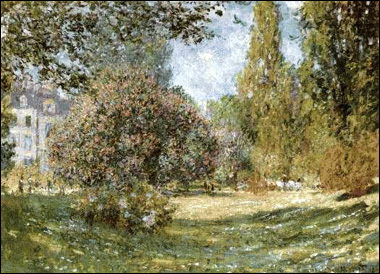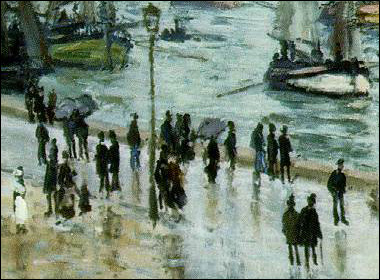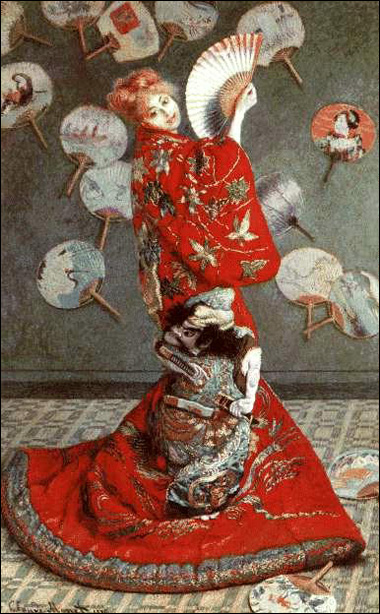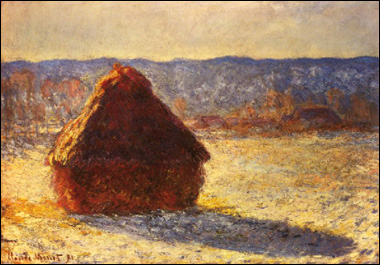Claude Monet was born in 1840 in Paris. He was especially influential in the Impressionist art movement, and is probably best known for his famous paintings of water lilies and Impressionist Parisian scenes.
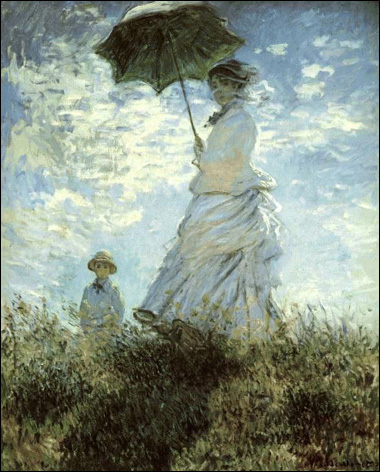
Monet first started drawing as a child, doing portraiture and caricatures for spending money. He also painted plein air landscapes as a teenager, before leaving to serve for two years in the military.
When he returned to Paris Monet formed friendships with several other young painters. The Impressionist movement that grew out of those friendships soon became characterized by his (then) peculiar obsession with painting almost entirely outdoors.
You see, most artists of that era spent hours in their studios, working from sketches or posed models, but Monet rarely did.
His paintings were intensely devoted to capturing the play of natural light and shadow on every surface—and he felt that the outdoors provided the best means of doing that.
Monet also challenged the traditional idea of what made a “finished” painting. He and the other Impressionists painted quickly, almost roughly.
In this detail of Monet’s Fishing Boats Leaving the Harbor, you can see why art critics ridiculed the early Impressionists’ work.
From their point of view, each figure was merely daubed on—and work like that was considered a sketch, not a true painting.
Most people will look at Monet’s work today and love that “painterly” approach, but for his time it was quite different from traditional paintings.
Like many of the other Impressionists, Monet was also interested in Japanese culture and art, as evidenced in the painting below.
La Japonaise is an interesting departure for him, since it’s obviously set indoors, but even so, Monet still portrays the same sense of movement and looseness that can be seen throughout his plein air pieces.
And in looking at the painting above (among others) it’s obvious that Claude Monet’s adherence to a certain style didn’t keep him from exploring new subjects and ideas.
Even something as simple as a haystack, for instance.
Just like his more famous water lilies, Monet painted several of these haystacks, in different lighting, different seasons, and different weather.
He took a subject that many artists would have passed by just because he was most interested in the image, the way the light landed at a certain time.
In the end, it didn’t matter to Monet whether the light was reflecting off a swirling red Japanese kimono or a simple stack of hay—he knew there was beauty in both.
Claude Monet died in 1926, at the age of 86.
This post may contain affiliate links.
